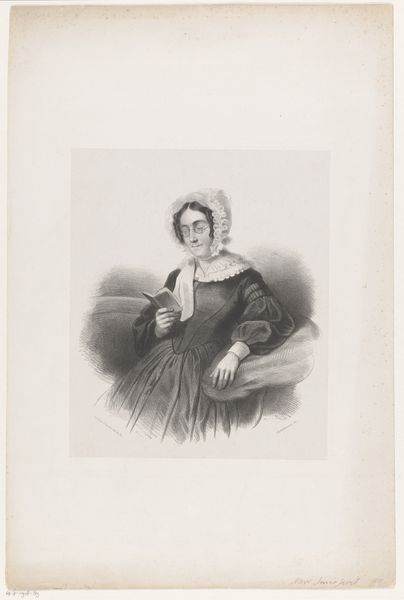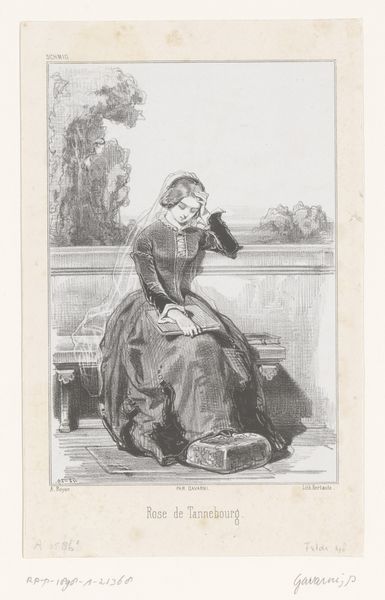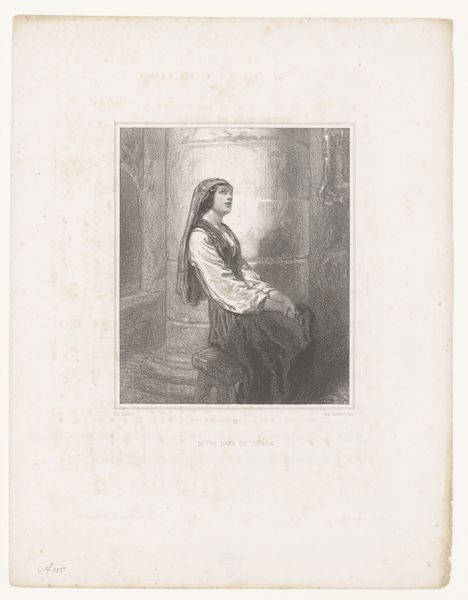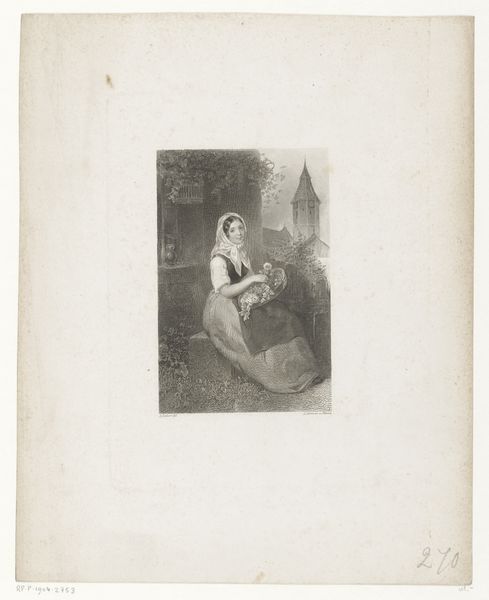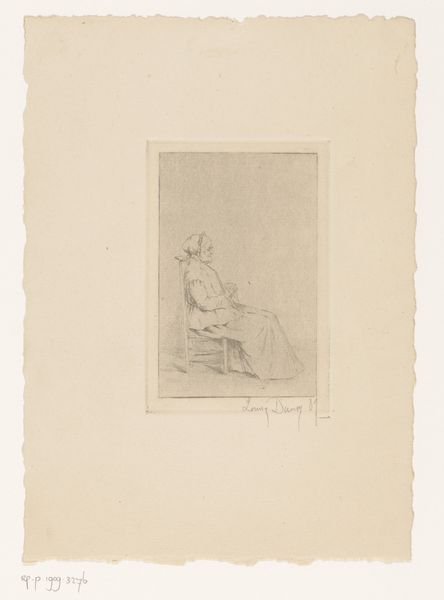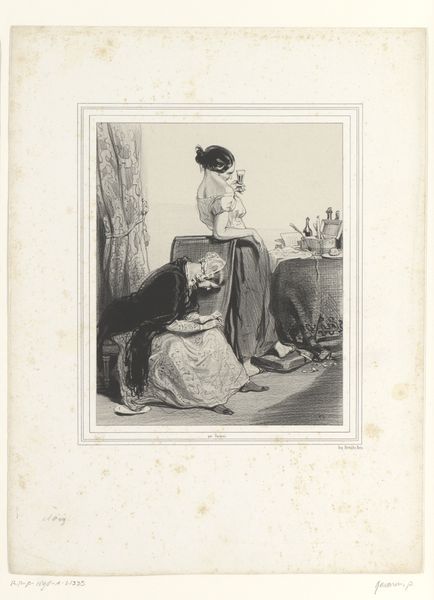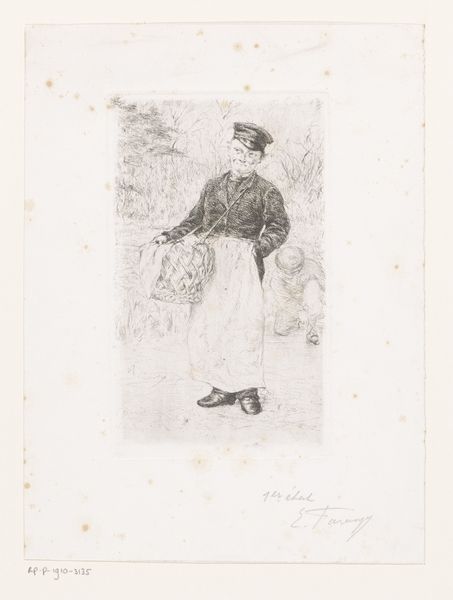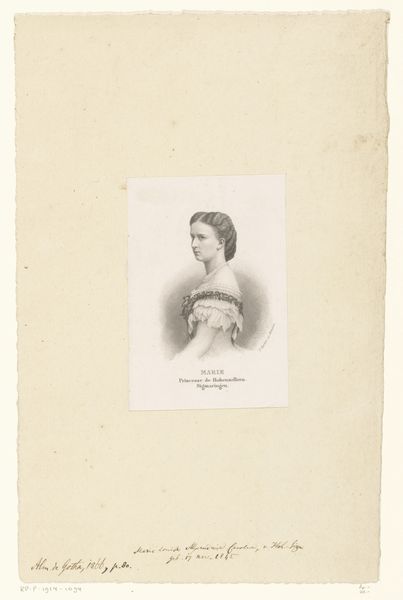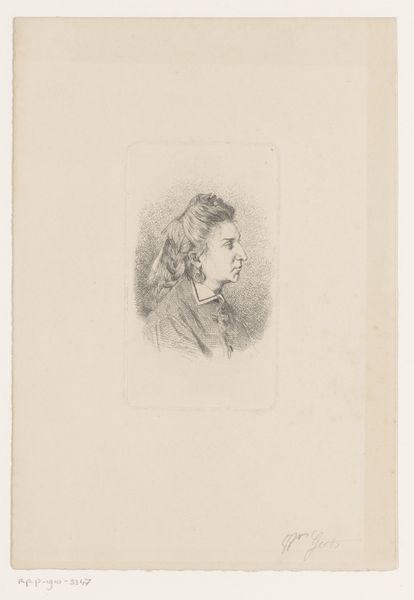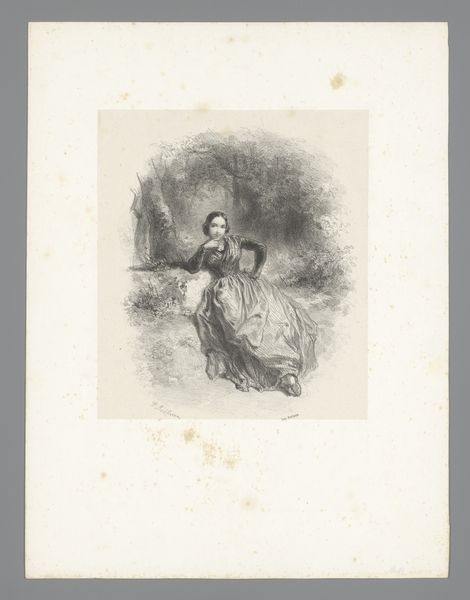
drawing, pencil
#
portrait
#
pencil drawn
#
drawing
#
pencil sketch
#
romanticism
#
pencil
#
genre-painting
Dimensions: height 359 mm, width 274 mm
Copyright: Rijks Museum: Open Domain
Paul Gavarni made this portrait of Mademoiselle Nourtier as a lithograph sometime in the mid-19th century. Lithography as a medium was well-suited to the rise of mass media in France and the increasing importance of print culture in the 1800s. This image creates meaning through visual codes tied to class and gender in 19th-century France. Consider how Mademoiselle Nourtier is framed within a domestic interior, seated and in repose. Her dress, though modest, indicates a certain social standing, emphasized by the presence of the ornate chair and decorative vase in the background. Gavarni was known for his insightful observations of Parisian life. His work often appeared in popular journals like "Le Charivari," which catered to a broad audience and offered social commentary through satirical illustrations. This portrait, like many of Gavarni’s works, reflects the values and norms of the bourgeoisie, while also subtly questioning the roles prescribed to women within that society. Understanding this artwork requires examining publications of the time and considering Gavarni's broader body of work, as well as archival research that provides a glimpse into the social and institutional contexts in which it was produced.
Comments
No comments
Be the first to comment and join the conversation on the ultimate creative platform.
